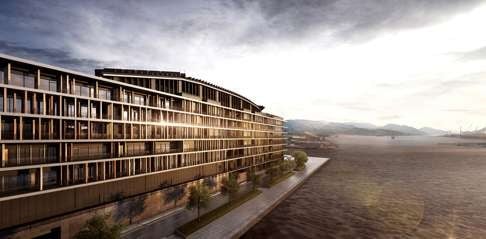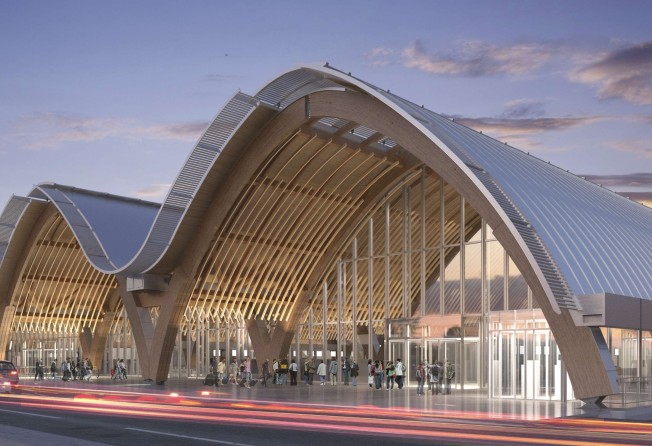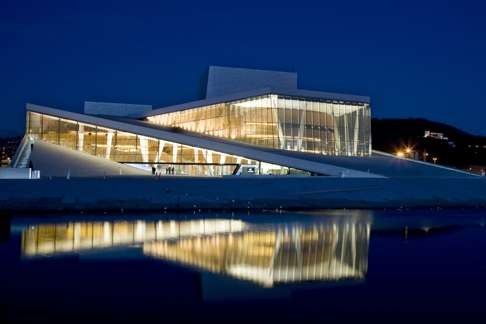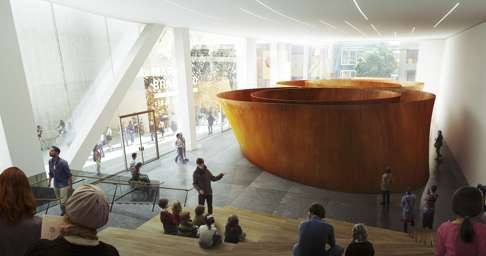
Asian architects take the green path by incorporating culture into designs
Forthcoming HK summit to explore effective ways of using traditional materials like wood in modern buildings

Picture an Asian city, all steel, glass, and concrete, where tall buildings have soft wooden “crowns” as their uppermost floor; where being green means cultural sustainability, as well as environmental; and where a new airport is fashioned as a boat, made out of timber.
Such cities are not merely imagined by four leading international architects – they are actual works in progress. Their creators will present keynote addresses at the upcoming Asian Congress of Architects Forum, the biennial congress of the Architects Regional Council Asia (ARCASIA), to be hosted by Hong Kong in September for the first time.
Having left his mark on important cultural institutions from North America to China, Bing Thom, founder of Canadian firm Bing Thom Architects, will put the case for the role of culture in sustainability.

“Cultural sustainability is important because it identifies who we are,” said Thom. He thinks it is a shame that culture, which Thom interprets as a sense of place, a sense of stability, is not given equal billing in the green agenda as economic, environmental and social elements.
He cites the Xiqu Centre, an opera house within the West Kowloon Cultural District, designed by Bing Thom with Ronald Lu & Partners (slated for completion late 2017). “The authentic cultural substance of Hong Kong culture is Cantonese opera – but how do you capture that in a contemporary setting, when the issue of cultural identity is so important for Hong Kong now?” And at the same time, make it commercially viable.
Thom views green as “a much bigger issue than just materiality”, and part of the social responsibility of architecture.
“Architecture has that wonderful capacity to, with no words, strike you both in the head and the heart. When you look at a building it resonates with you immediately, without any explanation, and as you move through the space, do you feel it is a building that belongs to you, [and is] an expression of your being?” he said. “To capture that is very difficult – it takes many levels of thinking.”
Tomohiko Yamanashi, deputy head of architectural design at Nikken Sekkei, will champion the use of wood as an urban construction material. His seminal project, the Japanese Association of Wood Wholesalers’ Tokyo office back in 2009, was published in The Art of Japanese Joinery by Kiyosi Seike, as an artistic craft.
Yamanashi imagines cities where the top floor of buildings is crafted from timber – which, he says, is cheaper to construct, reduces the heat island effect, and has the potential to change the skyline of cities as we know them. Yamanashi is creating a wooden top floor on a current project, the new city hall of Nagasaki Prefecture.

Quoting a Japanese proverb about “placing the right materials in the right place” – a reference to traditional temple construction, when the carpenter in charge had to select suitable wood for each element – Yamanashi says it is equally incumbent on architects today to find a place for wood in contemporary architecture.
“With the right placement, wood can play an important role in green and sustainable design,” he said.
Winston Shu is the brains behind the airport terminal fashioned as a timber boat hull, currently under construction at the Philippines’ Mactan-Cebu International Airport. It is, he says, a design informed by the traditional boat-building craft of the local community.
Shu, founder of Integrated Design Associates, has worked on many airports, including on the mainland, India and Hong Kong. Apart from making the building itself as energy efficient as possible, he says, sustainability can be factored in through architecture that will attract users, giving the facility a longer shelf life.

Snøhetta managing director Robert Greenwood, whose projects include the Egyptian Library of Alexandria, the Oslo Opera House and San Francisco Museum of Modern Art, has a reputation for integrating landscapes into urban design. When there’s not enough scope to have large natural settings in mega-cities like Asia, he will show how architects “can create nature within buildings”.
Vincent Ng, president of the Hong Kong Institute of Architects, which is hosting the forum, thought it fitting that Hong Kong, as one of the most compact cosmopolitan cities in the world with more than 7,600 skyscrapers, will be a showcase of high density urban living for fellow architects in Asia. And the right place to start a conversation about seeing Asian cities of the future in a new light.
The 17th Asian Congress of Architects Growth and Diversity: The Green Age of Asia, runs from September 25 to October 1 at the Hong Kong Convention and Exhibition Centre. Details: www.aca17hk.com/